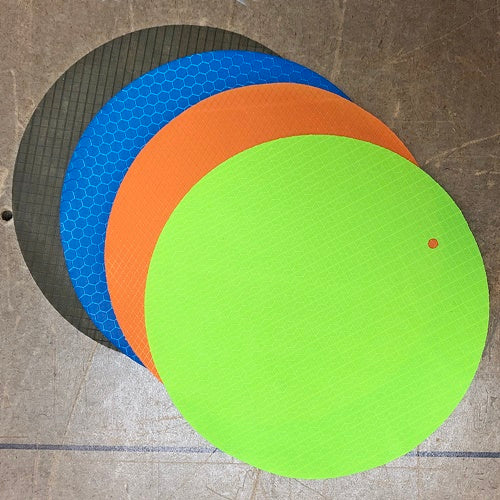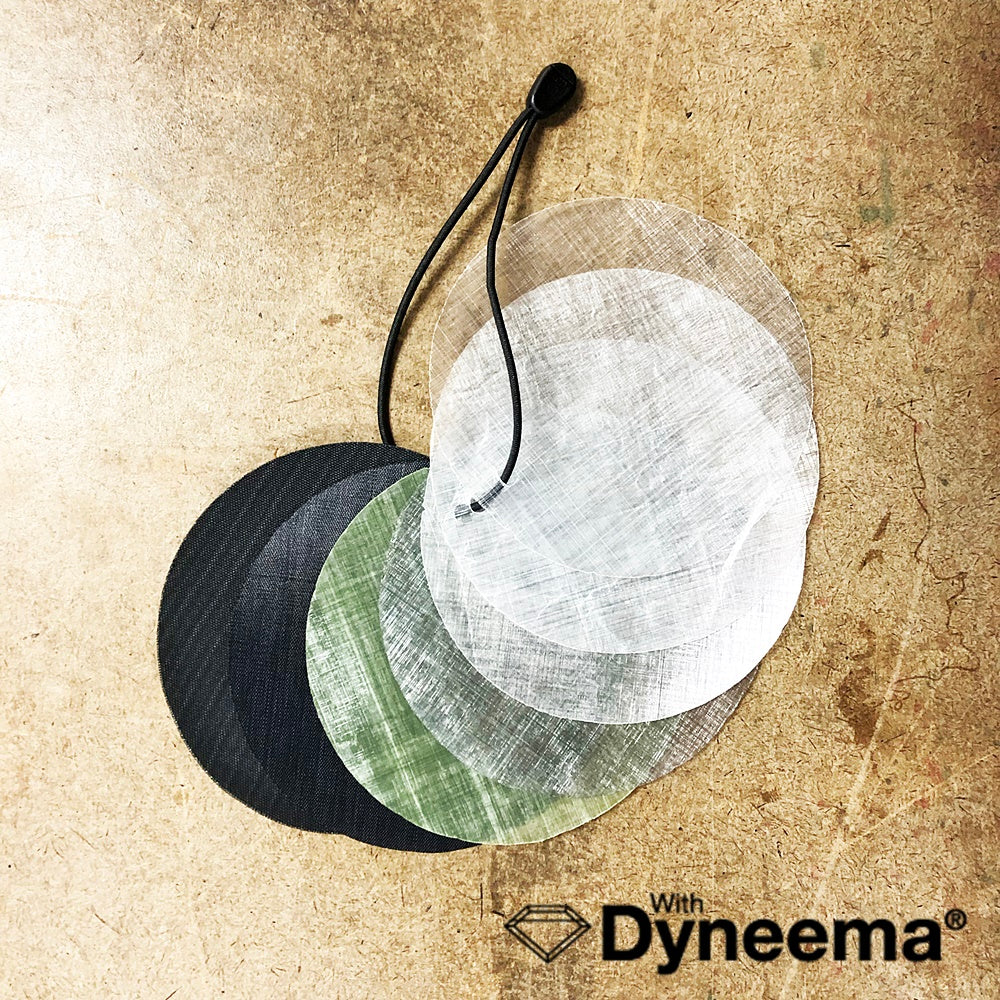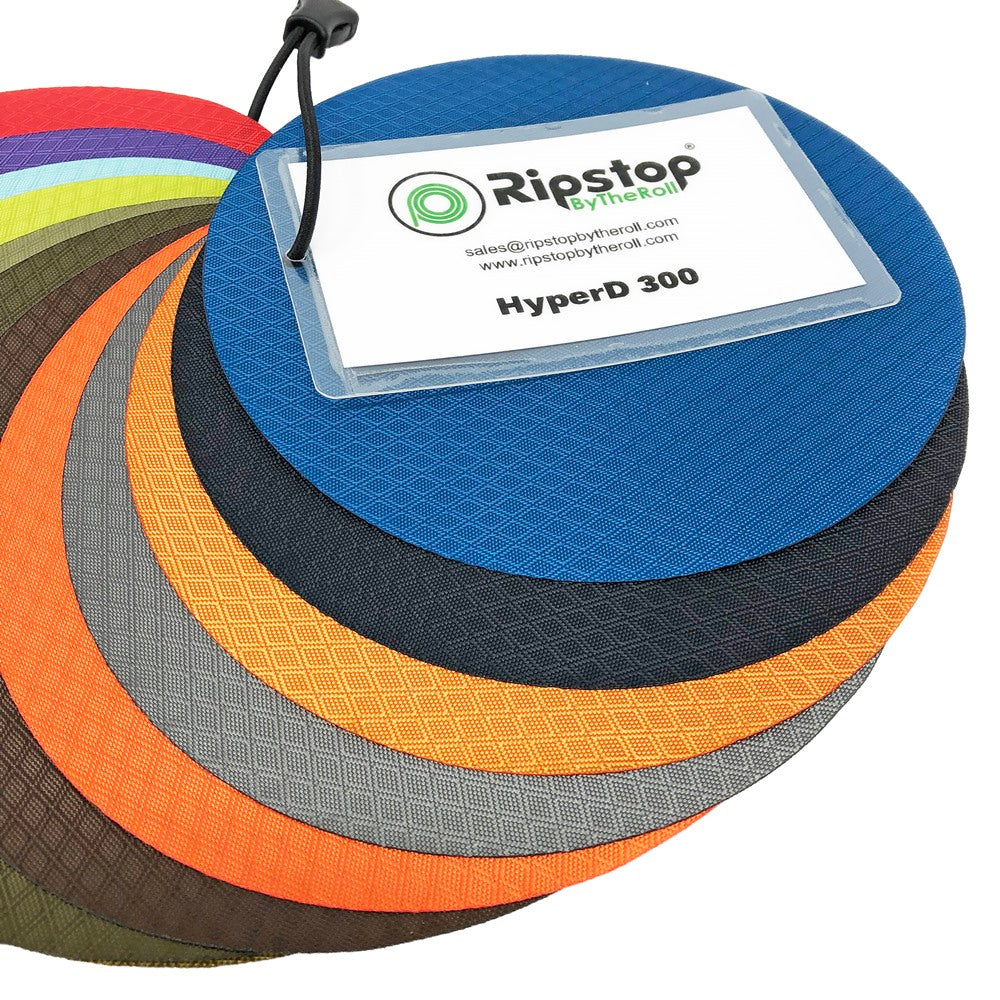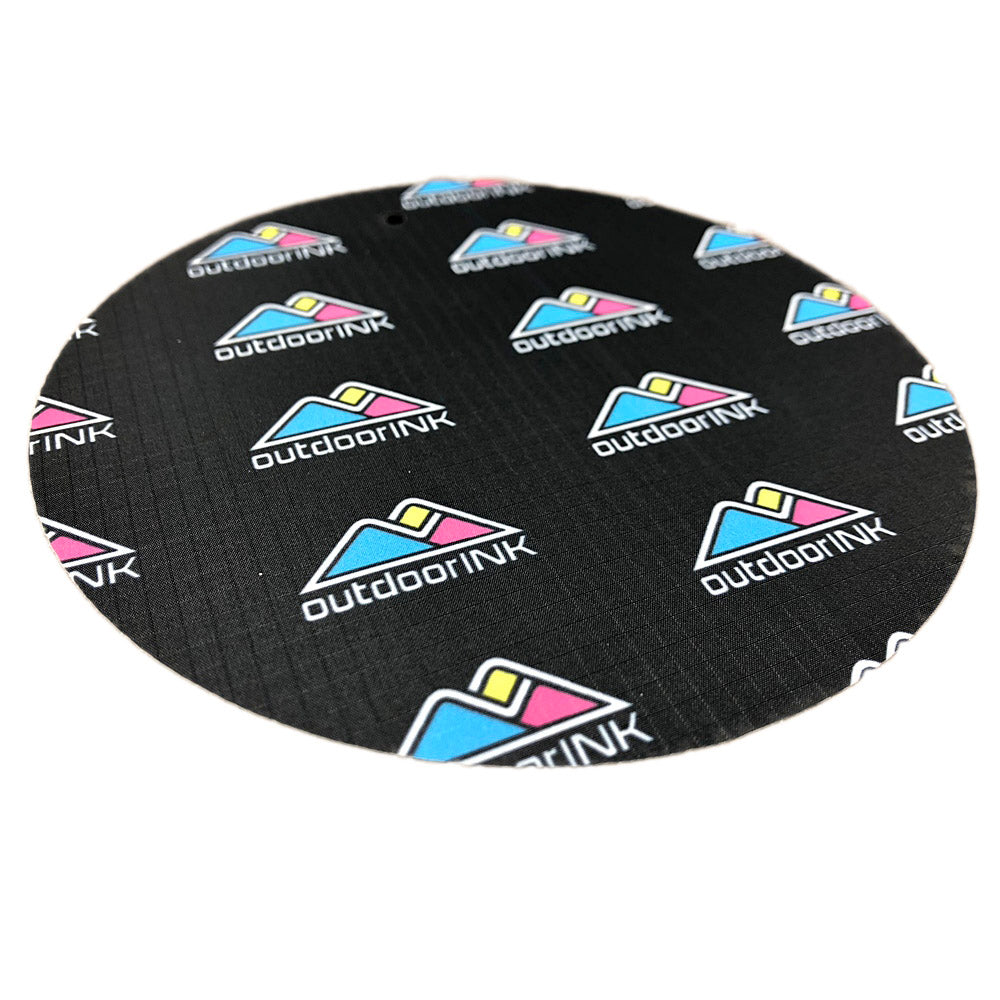The Top 10 Fabric Terms You Need to Know
One of the biggest problems with buying fabric is understanding the terminology - and there's a lot of it.
If you don't know the lingo, it can be really frustrating, especially when you're just starting out. That's why we've put together a list of the top ten fabric terms that you need to know.
Read this article to fast track your fabric knowledge and start making confident decisions for your project or product.
1. Weight
Understanding the weight of the fabric is important for understanding fabric application. We include the weight of the fabric in the naming scheme. For example, if you see something like 1.6 oz HyperD, then you can deduce that the base fabric is going to be 1.6 oz per square yard.
Per Square Yard
Something to be aware of is that a square yard isn't the same thing as a linear yard. A square yard is the weight of a 3 foot by 3 foot section of the fabric.
A linear yard accounts for the width of the fabric as well. Some fabrics will have widths as small as 54" wide and some will be upwards of 72" wide.
2. Denier
Denier is a measurement of fiber weight per unit length. Denier is the weight, in grams, of 9 kilometers of said fiber. A high denier fabric is 500d-1000d, ultralight fabrics can be as low as 5d.
Many people equate denier with durability. Although the denier of a yarn does impact the durability of a fabric they are not strictly connected.
A helpful way to think about denier is to picture the usage of the fabric and see if that aligns. For example, you wouldn't want to use 1000D Cordura as a lightweight windbreaker mateiral or MEMBRANE 7D for a tactical plate carrier.
3. Nylon/Polyester
Nylon and Polyester are two of the main fabric types that you will come across. These fibers possess different characteristics and thus present different benefits for your application.
Benefits of NYLON
- Has a higher abrasion resistance than polyester
- Higher tear strength than polyester
- Higher tensile strength than polyester
- More stretch than polyester
Benefits of POLYESTER
- Higher UV resistance than nylon
- Inherently hydrophobic (does not absorb water)
- Less stretch than nylon
- Able to be custom printed
When looking at these characteristics, you may draw conclusions about which fiber you like more. It's important to remember that there is no one fiber that is best. Both fibers have characteristics that you will want depending on the project. Keep in mind, coatings and finishes will have the largest impact on your material and application. For instance, adding silicone to polyester can improve the overall strength of the fabric.
Popular Nylon Fabrics:
Popular Polyester Fabrics:
4. UHMWPE
UHMWPE stands for...
Ultra
High
Molecular
Weight
Polyethylene
For people who aren't fiber science nerds, this normally refers to fibers like Dyneema® or Spectra®.
Fabrics with UHMWPE fibers are known for having insanely high tensile strength. Dyneema® is touted to be 15x stronger than steel (when compared at equal weights).
Other benefits of UHMWPE include...
- Highly Waterproof
- Extremely abrasion resistant
- Extremely tear resistant
- No Stretch
- High strength-to-weight ratio
Most people are intimidated by the price of fabrics made with UHMWPE fiber. Most outdoor synthetic fabrics will be $5-10 per yard. Fabrics with UHMWPE are $40-60 per yard.
These are costly, but for good reason. UHMWPE is one of the most advanced fibers in use today. Brands like Hyperlite Mountain Gear, Zpacks, Seek Outside, Tarptent, Durston Gear, Nashville Pack, and many others trust fabrics with UHMWPE for their packs, bags, and shelters.
Shelter fabrics with UHMWPE:
Pack fabrics with UHMWPE:
5. Ripstop
Ripstop is a plain weave variation, often used in outdoor technical fabrics. Most commonly a higher denier yarn is used to create a reinforcing grid pattern.
Ripstop is frequently used to increase tear strength, reduce bias stretch, and add a cool aesthetic to the fabric.
An important note is that many factors can impact the tear and tensile strength of a fabric. Including thread count, fiber, and finish.
Popular fabrics that have ripstop:
6. Taffeta
Taffeta is a plain weave, utilizing a single warp thread going over/under a single weft thread.
Some of the benefits of a taffeta weave are silk-like hand-feel, more stretch, and a tighter weave. (This can be helpful for downproofing or waterproofing.)
Good for applications such as quilts, sleeping bags, jackets, and other projects where fabric may be close to your skin.
Products with taffeta:
7. Woven/Laminate
The two most common types of fabrics for outdoor applications are woven or laminate/composite.
WOVEN
These are fabrics that are woven together with synthetic yarn(s). Typical finishes of woven fabrics include coating, impregnating, or calendering. In the example of our HyperD 300, the fabric is woven with a dobby weave, the face receives a DWR treatment, then the back is finished with a Polyurethane coating.
LAMINATE
These are fabrics that are comprised of different layers then laminated together to achieve the desired result. In the example of our 0.51 oz DCF, the layers used to create that fabric are PET film face and back with Dyneema® fiber sandwiched in between.
8. DWR
DWR stand for Durable Water Repellant
DWR is a style of finishing technique used to help the fabric not absorb water. Nearly all of our fabrics are finished with a DWR coating because this often affects the durability over the lifetime of a fabric.
The two most common types of DWR are C0 and C6. Ripstop by the Roll is in the process of transitioning all of our new and past products to use a PFC Free DWR.
9. PU/Silicone
PU (polyurethane) and silicone coatings are by far the two most favored methods of waterproofing a woven fabric.
PU Coatings
Polyurethane coatings are the most ubiquitous coating found in outdoor textiles because they offer a balance of cost, ability to seal easily with seam tapes and durability. PU is normally added to the back of a given fabric to make it waterproof, and protect the coating.
Pros of PU coatings include:
- Simple to seam tape
- Lower cost
- Extremely high waterproof possibility (Represented by Hydrostatic Head on a fabric data sheet)
- Can be mixed with fire retardant chemicals
- Great for backpacks/bags etc.
Cons of PU coatings include:
- Reduces tear strength
- will eventually wear out over years, especially if stored wet
- The coating will breakdown over time from exposure and use
- Ads a lot of weight to the fabric
Silicone Coatings
Sil coatings have become much more standard in the last 10 years in the industry. Usually, silicone is applied to both sides of nylon or polyester (also called impregnation) to waterproof the base woven fabric.
Pros of Silicone coatings include:
- Lighter
- Increases fabric tear strength
- Chemically inert (no hydrolysis)
- Highly durable
- Totally hydrophobic
- Increased abrasion resistance
Cons of Silicone coatings include:
- Higher price
- Harder to seam seal/sew
- Not great for heavier-duty applications
- Can be more difficult to get extremely high hydrostatic head rating
- Cannot be mixed with chemical fire retardants
10. Calendered Fabrics
Calendered materials have gone through an additional treatment process to flatten the fabric and seal the gaps between the individual fibers of the weave. The sealed weave adds higher wind resistance, the ability to hold in clusters of down and can improve hand-feel.
This process traditionally involves hot rollers and pressure, but can also include special coatings to insure that insulation cannot escape and that the fabric has the desired traits. Because of the heat involved, calendering does tend to decrease the tear strength of the fabric somewhat. So for a given fabric, there's a tradeoff between things like downproofness/wind resistance and tear strength when calendering.
Due to this process, you might notice one side of the material (usually used as the "back") is shinier and slicker.
Closing
There are a lot more fabric terms to know, but this top ten list is great start. If you're looking to go deeper and expand your knowledge, we're actually working on a full “fabric glossary” for our website, set to launch later this year. This tool will give you a detailed breakdown of 100+ fabric and MYOG terms.
Now that you've got the top ten terms down, tell us how you're feeling. If you're confused or have questions about anything, let us know in the comments below. As always, we're here for you!





















